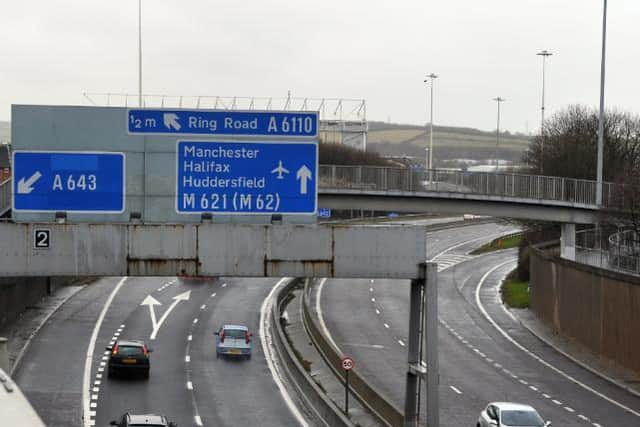Leeds 1970s ‘motorway city’ plans led to ‘climate issues’ and ‘disconnected neighbourhoods’, report claims
and live on Freeview channel 276
It comes as Leeds City Council transport chiefs want to spend millions helping the city centre rid itself of its car-focused past, with so-called “people-centric” plans for improving the city centre, which include pedestrianising city square and a redesign of Armley Gyratory.
The report claimed these schemes could act as the biggest change to the city centre’s road network since the pedestrianisation of Briggate in the 1990s.
Advertisement
Hide AdAdvertisement
Hide AdThe improvements are all part of what the council calls its “city centre transformation” plans.


The report stated: “The city is making major progress in the delivery of people centric infrastructure and public spaces across the city centre.
“This strategy focuses on providing high quality spaces in between buildings which meet the needs of people first, to improve connectivity to and from surrounding neighbourhoods, help tackle the climate emergency, improve air quality and to foster enjoyment community, innovation and collaboration – all whilst ensuring there is sufficient resilience within the highway network and promoting sustainable transport modes.”
Leeds adopted its “motorway city of the ’70s” strategy in the 1960s, as city leaders wanted to capitalise on the boom in car ownership and the building of the nearby M1 and M62 motorways.
Advertisement
Hide AdAdvertisement
Hide AdHowever, the report claims this scheme, which led to the construction of the M621 in 1972, did not ultimately benefit the city in the long term.
It stated: “The (new) approach to the city centre aims to overcome historic barriers and issues posed by dominant highways infrastructure advocated by the 1970’s ‘Leeds Motorway City’ approach to place and infrastructure in the city. In particular, large swathes of ‘through traffic’ contribute to climate issues, disconnect surrounding neighbourhoods from the city centre and discourage investment.”
At a meeting next week, council officers will seek approval from senior decision-makers to close city square to traffic as part of a wider £78m city centre improvements; and to redesign Armley Gyratory for work expected to cost around £40m.
The gyratory upgrade is expected to include “widening and realigning” the existing roads, and removing the “cut-through” link on the central island. It is also expected to have improved cycle links, landscaping and walkways.
Advertisement
Hide AdAdvertisement
Hide AdWork on both schemes is expected to be completed in December 2022, in time for Leeds 2023 cultural events.
The report added: “The effect of the schemes represent the biggest change in the city centre road network since the pedestrianisation of Briggate in the 1990’s and creation of the Loop Road.”
Leeds City Council’s executive board is set to meet on Wednesday, April 21 to discuss the plans.